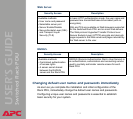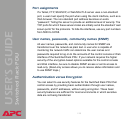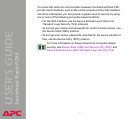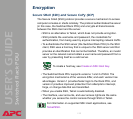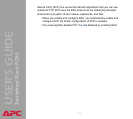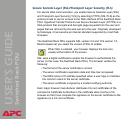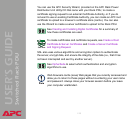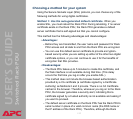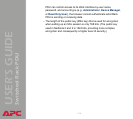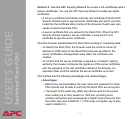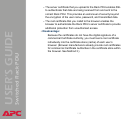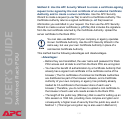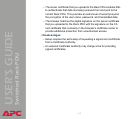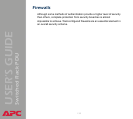
®
USER’S GUIDE
Switched Rack PDU
127
Choosing a method for your system
Using the Secure Sockets Layer (SSL) protocol, you can choose any of the
following methods for using digital certificates.
Method 1: Use the auto-generated default certificate. When you
enable SSL, you must reboot the Rack PDU. During rebooting, if no server
certificate exists on the Rack PDU, the Rack PDU generates a default
server certificate that is self-signed but that you cannot configure.
This method has the following advantages and disadvantages:
• Advantages:
– Before they are transmitted, the user name and password for Rack
PDU access and all data to and from the Rack PDU are encrypted.
– You can use this default server certificate to provide encryption-
based security while you are setting up either of the other two digital
certificate options, or you can continue to use it for the benefits of
encryption that SSL provides.
• Disadvantages:
– The Rack PDU takes up to 5 minutes to create this certificate, and
the Web interface is not available during that time. (This delay
occurs the first time you log on after you enable SSL.)
– This method does not include the browser-based authentication
provided by a CA certificate (a certificate signed by a Certificate
Authority) as Methods 2 and 3 provide. There is no CA Certificate
cached in the browser. Therefore, whenever you log on to the Rack
PDU, the browser generates a security alert, indicating that a
certificate signed by a trusted authority is not available and asking if
you want to proceed.
– The default server certificate on the Rack PDU has the Rack PDU’s
serial number in place of a valid common name (the DNS name or
the IP address of the Rack PDU). Therefore, although the Rack



